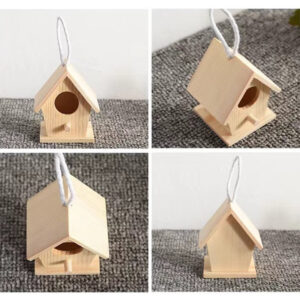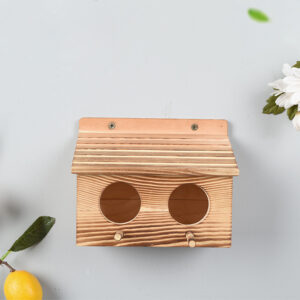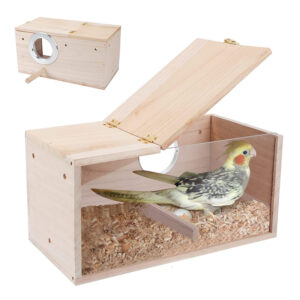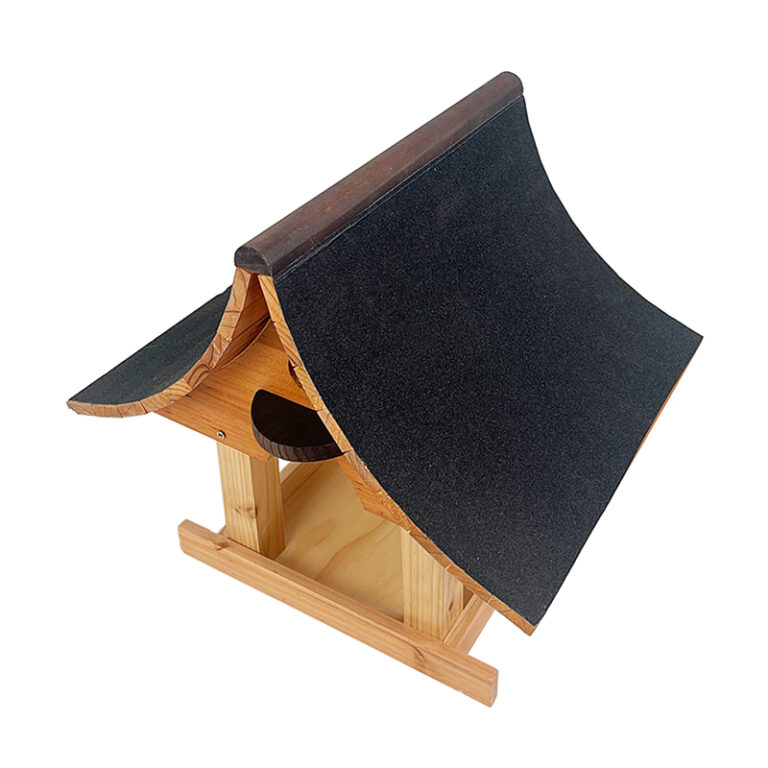
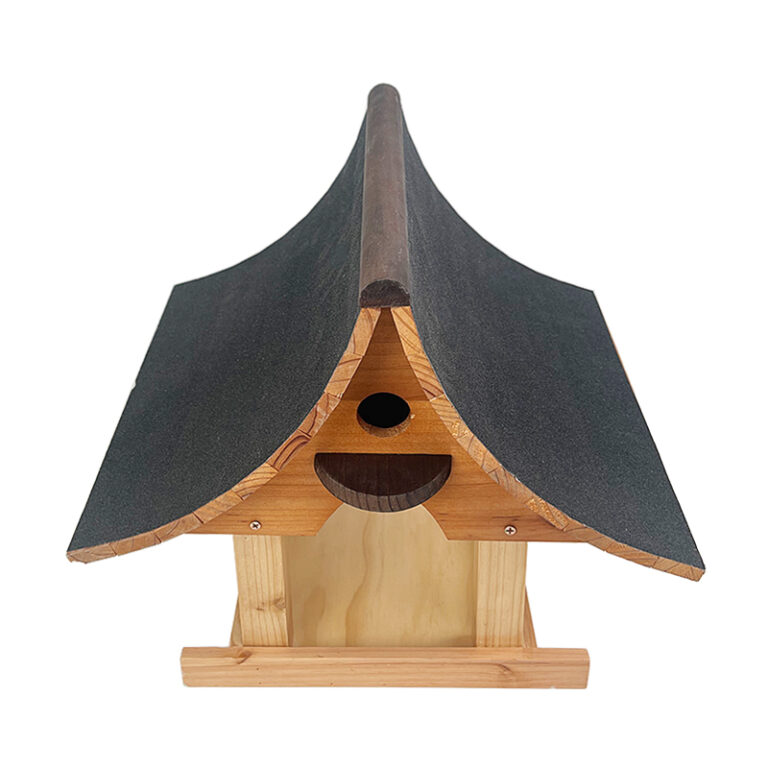
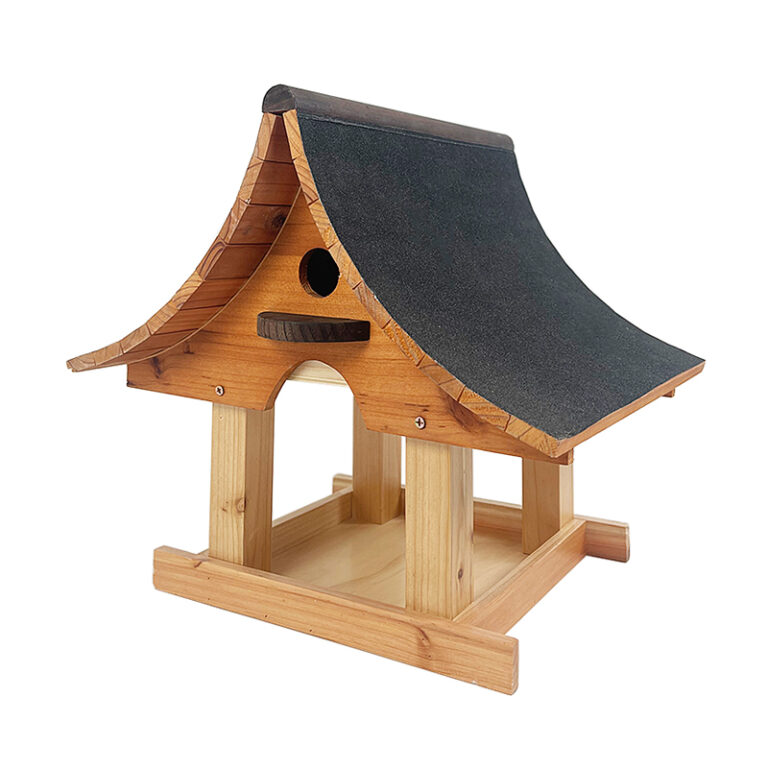
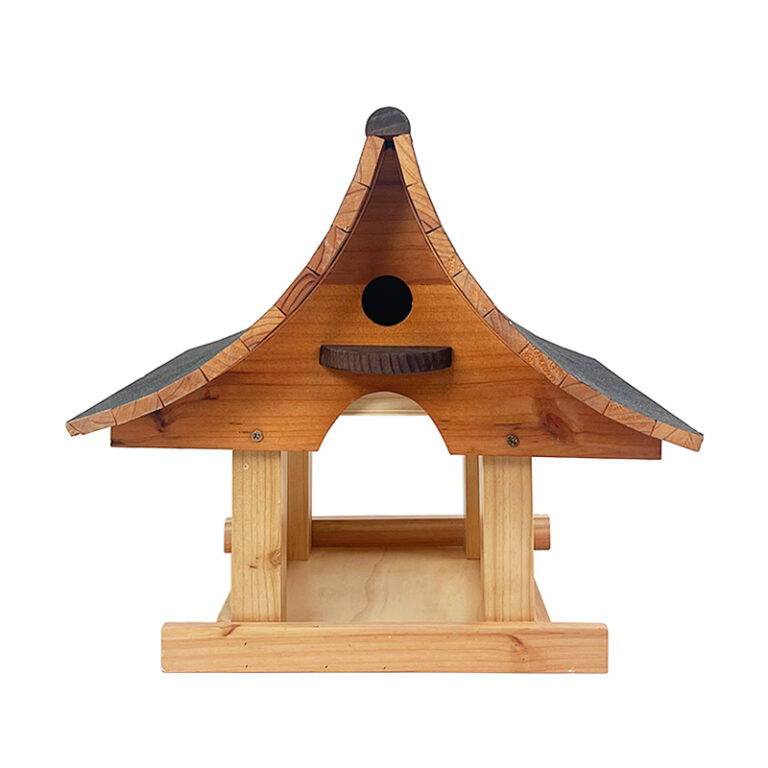
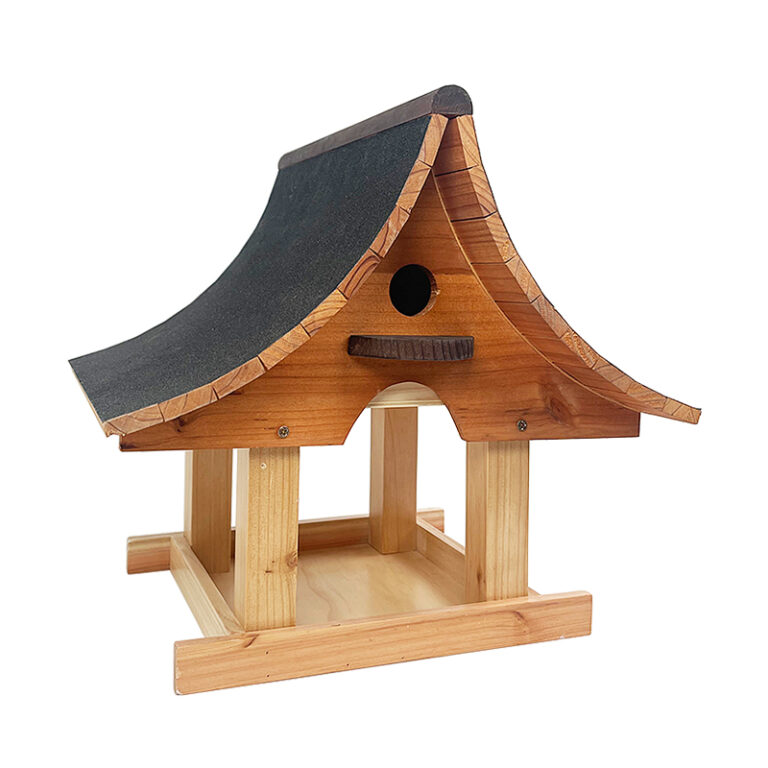
Wild Bird Feeder For Freat Outdoor Hanging Wood Bird Feeder Mangiatoia per uccelli Suitable
A bird feeder is a device designed to provide food for wild birds, typically mounted outdoors. It can come in various shapes and sizes, such as tube feeders, hopper feeders, or platform feeders, and is often made of materials like plastic, metal, or wood. Bird feeders attract a variety of bird species, offering them seeds, nuts, or nectar. By providing a reliable food source, they help support bird populations, especially during harsh weather conditions or in urban environments where natural food sources may be scarce.
Product Description
A bird feeder is a specially designed device used to attract and provide food for wild birds. Typically made from a variety of materials including plastic, wood, metal, or glass, its primary function is to offer a reliable source of nourishment for birds, particularly in areas where natural food sources might be scarce or during harsh weather conditions.
Design and Structure:
- Basic Components:
- Feed Reservoir: This is the part of the bird feeder that holds the bird food, which can be seeds, suet, nectar, or other types of bird feed. It is often designed to be easily refillable.
- Perches: Most feeders include perches or landing spots where birds can rest while feeding. The size and number of perches can vary based on the types of birds the feeder is intended to attract.
- Dispensing Mechanism: Some feeders have mechanisms that control the release of food, such as gravity-based systems, where food is dispensed as birds eat, or tube feeders with small ports that release seeds one at a time.
- Types of Bird Feeders:
- Tube Feeders: These are cylindrical feeders often made of plastic or glass, with holes or ports along the tube from which birds can peck at the seeds. They are effective for attracting small to medium-sized birds like finches and chickadees.
- Hopper Feeders: Shaped like a small house or hopper, these feeders have a large reservoir and typically feature a roof to protect the food from rain. They can attract a variety of bird species and can be mounted on a pole or hung from a branch.
- Suet Feeders: Designed specifically for suet cakes, these feeders are often made of metal mesh or wire and can attract insect-eating birds like woodpeckers and nuthatches.
- Nectar Feeders: These are used for hummingbird nectar and often come with red coloring to attract hummingbirds. They usually feature small ports or perches where the birds can drink the nectar.
- Materials:
- Plastic: Lightweight and easy to clean, plastic feeders are popular for their durability and versatility. However, they can be less aesthetically pleasing and might be prone to warping over time.
- Wood: Wooden feeders are often chosen for their natural look and can be very sturdy. However, they require more maintenance to prevent rot and damage from weather.
- Metal: Metal feeders, such as those made from aluminum or stainless steel, are durable and resistant to pests like squirrels, though they can be prone to rust if not properly coated.
- Glass: Glass feeders are aesthetically pleasing and easy to clean but can be more fragile and prone to breaking.
Functionality and Maintenance:
- Ease of Refilling: Good feeders are designed to be easy to refill without making a mess. They often have wide openings or removable tops for convenient access.
- Cleaning: Regular cleaning is crucial to prevent the spread of disease among birds. Many feeders are designed to be disassembled for thorough washing.
- Pest Control: Some feeders come with features to deter squirrels and other pests, such as baffles or squirrel-proof mechanisms.
Placement:
- Mounting Options: Bird feeder can be mounted on poles, hung from trees or hooks, or attached to windows. The placement should consider safety from predators, accessibility for birds, and visibility for birdwatchers.
- Location: Placing feeders near natural cover, such as shrubs or trees, provides birds with a safe place to retreat. However, they should be positioned away from heavy traffic areas to avoid disturbances.
Overall, a well-designed bird feeder not only provides essential food to wild birds but also enhances the enjoyment of birdwatching, offering a front-row seat to observe the diverse and colorful avian visitors.


